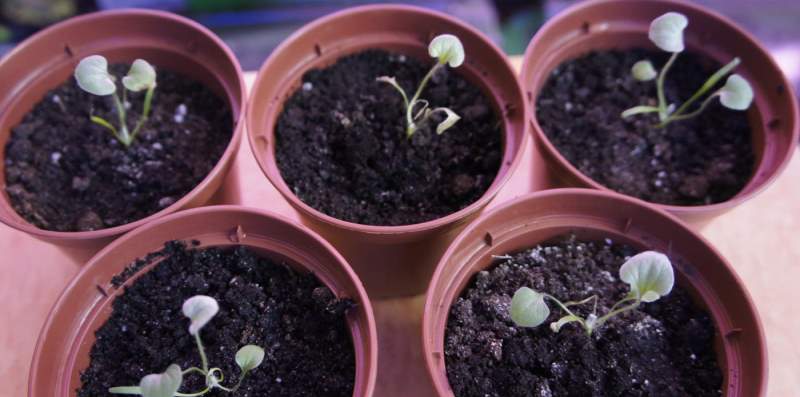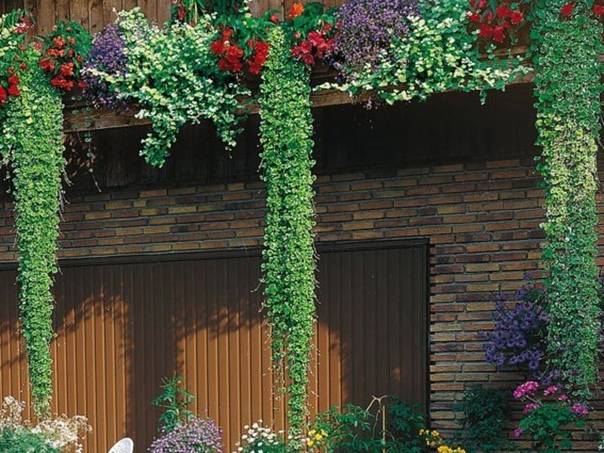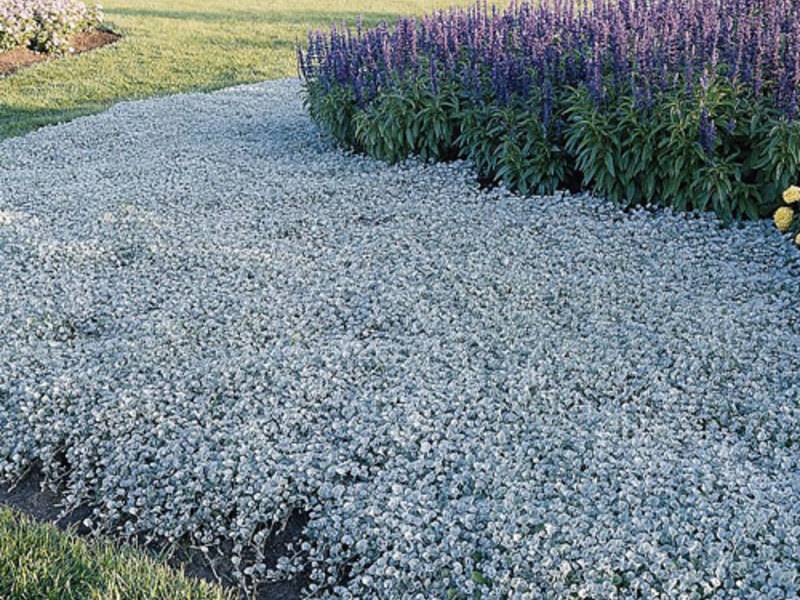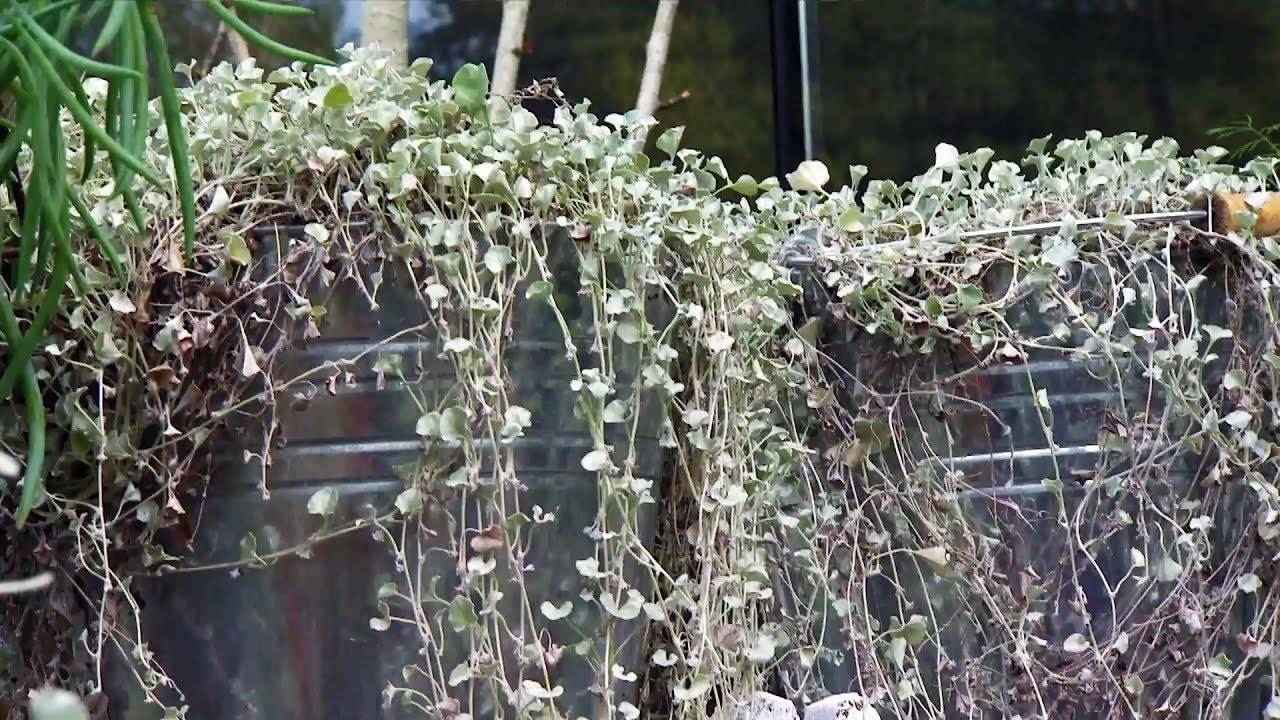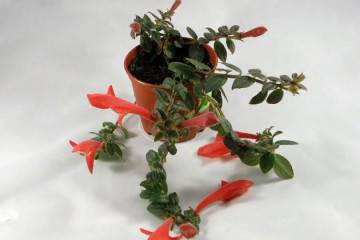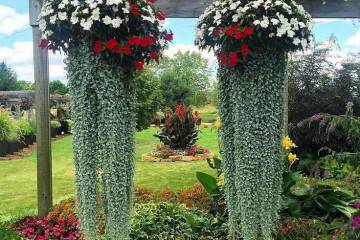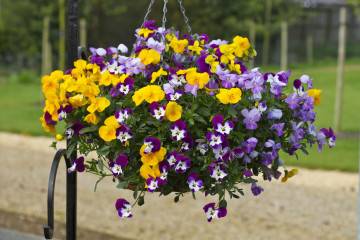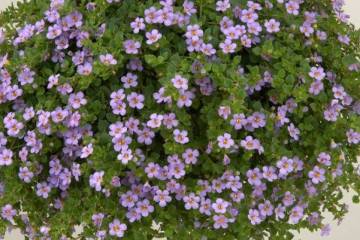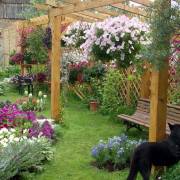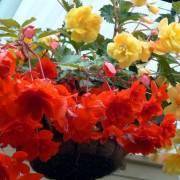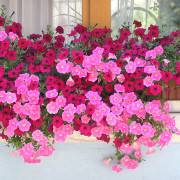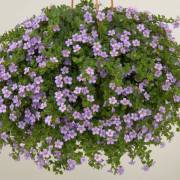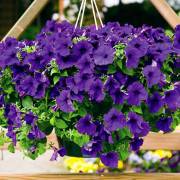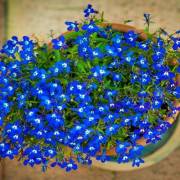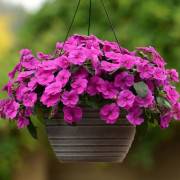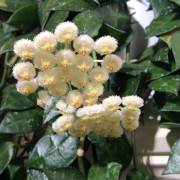Growing dichondra Emerald Falls and Silvery Falls
Content:
Dichondra Silver waterfall is a beautiful ampelous plant. It is intended for both vertical and horizontal gardening of the site. Her flowers are small, inconspicuous. All beauty lies in the cascading shoots that look like silver. Further information on how to grow a crop indoors and outdoors.
Growing
A crop with beautiful silver leaves can be propagated by seed or cuttings. The second option is possible if the house already has at least one plant.
Seed material is purchased at a flower shop. Dichondra ampelous growing from seeds is not difficult. Throughout the summer season, she will decorate the site with her long shoots with silvery leaves.
Features of growing from seeds
Sowing is carried out in boxes, then the grown bushes are transplanted into separate pots or to a prepared area. The sowing procedure begins at the end of January.
Seed material is immersed in potassium permanganate solution for 30-40 minutes for disinfection. Then it is dried, placed in water to which a growth enhancer has been added.
The sowing process is carried out as follows:
- a container with low sides is filled with a substrate consisting of fertile soil and sand;
- seeds are spread over the surface;
- lightly sprinkle with sand;
- cover the box with plastic wrap.
Dichondra planting and leaving is not difficult. Contain containers with crops in a warm and bright place, but not in direct sunlight. The film is removed every day for a few minutes for airing. When the first shoots appear, the shelter is removed for good.
Planting and leaving
Seedlings develop slowly. When the 3-4th true leaves appear, the crops dive. Young bushes are carefully removed from the ground, transplanted into separate pots.
Containers with creeping dichondra are placed in a well-lit place. With a lack of light, the shoots will begin to stretch. Care consists in watering the plants, gently loosening the soil. The culture will be grateful for periodic spraying.
Planting seedlings in pots
The grown bushes are planted in larger pots. The procedure for transplanting dichondra seedlings is performed as follows:
- a drainage layer of small stones, broken bricks, expanded clay is laid on the bottom of the container;
- loose, fertile soil is poured;
- in the middle, a depression is made into which a dichondra sprout is planted along with a lump of earth;
- watered abundantly.
Excess water from the pan is poured out 10-15 minutes after irrigation.
Dichondra Emerald Falls
There is another dichondra variety designed for vertical gardening. At the Emerald Falls, heart-shaped leaves of a grassy color. Green dichondra can also be used on site as a ground cover plant.
Long shoots with green leaves are effectively combined with beautifully flowering crops. Plants are planted in the root circle of trees and shrubs, used to decorate rockeries.
Growing dichondra Emerald Falls is made from seeds or cuttings.It is convenient to use peat tablets for this. The grown bushes are planted in pots or in a prepared place in the open field after the threat of frost has passed.
Dichondra: outdoor care
Before planting the dichondra, the site is freed from debris. Bushes are planted in loose, fertile soil. The site must be well lit by the sun, otherwise the shoots will grow thin, and the leaves are pale, inconspicuous.
Growing dichondra and caring for it does not require a lot of labor. It needs to be watered periodically, fed, cut off.
Top dressing for lush growth
To maintain a decorative appearance, the culture is fertilized twice a month. For this, mineral substances are used for decorative deciduous plants. Nutrients are applied to moist soil.
If the florist plans to keep the bushes indoors in winter, the amount of fertilizer used is reduced from September. In the autumn period, it is enough to feed the dichondra once a month.
Watering mode
The culture loves abundant watering. This should be done after the topsoil under the bushes has dried out. In dry, hot weather, the earth is moistened every day. In the morning and in the evening, silver-colored shoots can be sprayed with water from a spray bottle.
Care must be taken that the ground is not constantly wet. Otherwise, the Silver Falls can be affected by fungal diseases.
Wintering
The bushes of the culture are not frost-resistant, so they are brought into the house for the winter. Plants are kept in a room with a temperature of + 11-15 ° C. Watering during this period is reduced, feeding is stopped altogether.
If the planting of dichondra and care was carried out in the open field, the shoots are cut off, the root system is dug out. Without shaking off a clod of earth, the roots are covered with sand. They are sent for storage to the basement.
Pests and diseases
With excessive soil moisture, the dichondra can be affected by pathogenic microorganisms. This usually happens when growing crops outdoors. Having discovered a disease, you need to immediately spray the bushes with fungicides.
The flower can be attacked by aphids, fleas, whiteflies. Pests suck out juices, weakening plants. They destroy insects by irrigating the bushes with an insecticide solution.
Nematodes bring great harm to dichondra. Worms destroy plants. Fighting them is useless, therefore, upon finding these pests, the bushes are destroyed, and the ground is sprayed with chemicals.
Dichondra Silver waterfall is a beautiful ampelous flower intended for vertical gardening. In addition, the crop can be used as a ground cover plant. It is easy to care for it, so growing is possible even for a novice florist.

